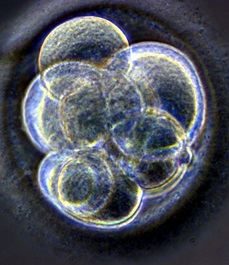'Embryo' definition challenged
 Ethicists are challenging the conventional definition of a human embryo.
Ethicists are challenging the conventional definition of a human embryo.
In a new article, experts propose a revised definition that pivots the focus from ‘how it came to be’ to ‘what it can become’.
The proposed definition of an embryo reads: “a group of human cells supported by elements fulfilling extra-embryonic and uterine functions that, combined, have the potential to form a fetus”.
These proposed changes stem from the rapid evolution of human stem cell research, specifically in the realm of embryo models, which has triggered both scientific and ethical discussions.
The paper not only offers a viable alternative to using embryos originating from fertilised human eggs but has also prompted the development of ethical guidelines to parallel these scientific advancements.
Nicolas Rivron, a developmental biologist at the Austrian Academy of Sciences and the first author of the perspective, points out; “Stem cell research has enabled the formation of models capable of organising into structures that rudimentarily resemble embryos and reflect various degrees of completeness and developmental stages”.
These propositions are part of a broader effort to bring clarity to the ongoing research, refine the legal definition of human embryos, and distinguish what sets models apart from embryos legally.
These new propositions are built upon the latest guidelines issued by the International Society for Stem Cell Research (ISSCR) in 2021, which dealt with emerging advancements in stem cell-based embryo models, human embryo research, chimaeras, organoids, and genome editing.
These discussions started gaining momentum following the development of mouse embryo models, as scientists anticipated similar breakthroughs in their human counterparts.
Rivron underscores the need to adapt ethical oversight in parallel with scientific progress.
“Here, we propose a refined definition of the human embryo that focuses on what it can become rather than how it came to be. This definition allows us to think about the conditions under which models, if improved, might eventually pass a tipping point and be legally considered embryos,” he said.
However, while scientific societies guide decisions on regulating embryo research, it remains the responsibility of local authorities to enact these regulations.
Rivron notes that different nations take diverse approaches, with some adapting ethical guidelines set by scientific societies without legislative backing, while others, like the UK, embed these decisions within regulatory frameworks, such as the 14-day rule restricting embryo culturing.
Additionally, the authors stress that it's the duty of scientists to ensure that the public comprehends and perceives human embryology with embryo models accurately.
“Appropriate, trustworthy, and timely public communication is necessary,” Rivron says.
In this context, the terms ‘embryo models’, ‘embryonic models’, and ‘stem cell-derived embryo models’ are favoured over ‘synthetic embryos’ to avoid the misconception that synthetic elements are involved.
“The reality is that these embryo models cannot form neonates, but they help us fill an important knowledge gap in our basic understanding of how humans form - something that is normally hidden in the womb,” Rivron says.
“We hope that in the future this knowledge will benefit society by supporting the development of medicines to combat infertility and early pregnancy loss and by leading to a better understanding of the origins of congenital malformations and diseases.
“The field is still in its infancy, but it is opening important and previously inaccessible avenues for science, ethics, and medicine.”








 Print
Print